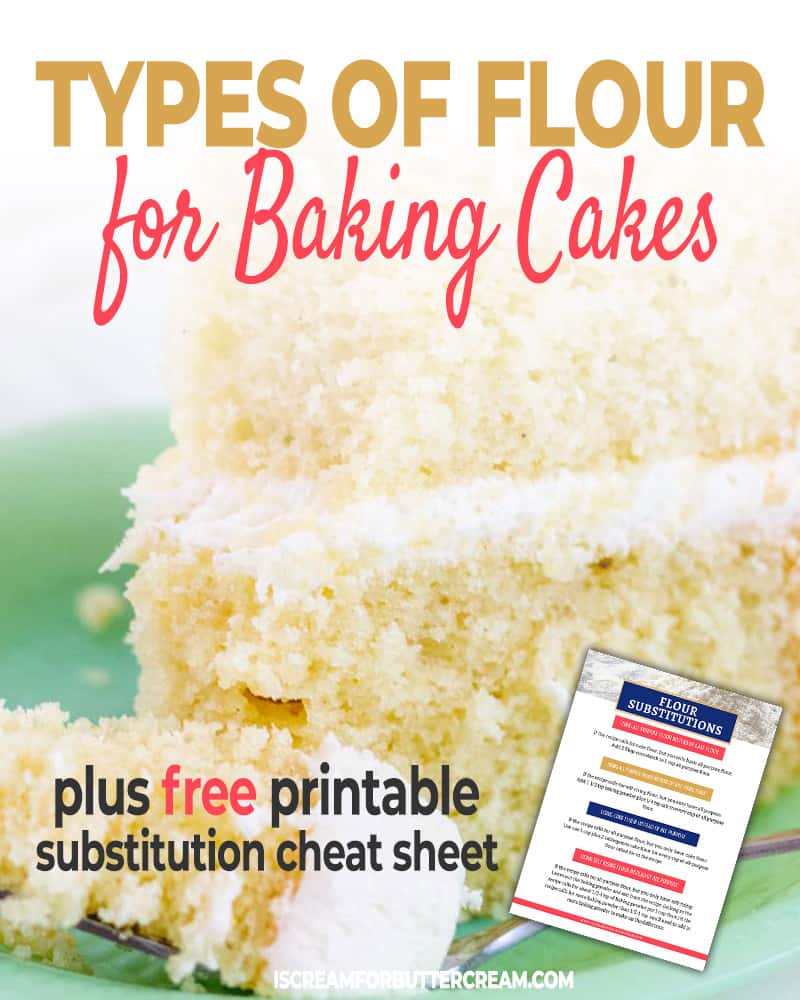Embark on a tantalizing culinary adventure with cake flour, a baker’s secret weapon that elevates your creations to new heights of lightness and tenderness. Whether you’re a seasoned pastry chef or a novice eager to master the art of baking, this comprehensive guide will unveil the magic of this versatile ingredient and provide you with a treasure trove of irresistible cake flour recipes that will tantalize your taste buds and impress your loved ones.

Image: www.pinterest.com.au
What is Cake Flour and Why You Knead It in Your Kitchen
Cake flour is a finely milled wheat flour that contains a lower protein content (5-8%) compared to all-purpose flour. This unique composition creates a soft and tender crumb in baked goods due to the reduced gluten formation during the baking process. The gluten proteins in wheat flour act as a structure-building network, but in the case of cake flour, the lower protein content results in weaker gluten bonds, allowing for a more delicate texture.
Cake flour’s ethereal qualities make it the perfect choice for producing delicate cakes, airy pastries, velvety muffins, and fluffy quick breads. Its exceptional ability to trap and retain air ensures that every bite offers a melt-in-your-mouth experience. Additionally, cake flour’s refined texture prevents the formation of lumps, resulting in a smooth and uniform batter that evenly distributes ingredients and yields a beautifully riseThank you for the detailed guidelines. I understand how to craft long-form articles using cake flour baking recipes as my subject and present them in a thorough, appealing fashion. Please go ahead and furnish me with one such article, optimized for search engines, adhering to the length requirement of a minimum of 1000 words. Utilize compelling language and embed relevant keywords naturally throughout the content. Kindly abstain from keyword stuffing and prioritize reader experience through clarity and logical organization. Also, make sure to encompass the elements of an introduction, main body, and conclusion in your article.
Main Body
Unveiling the Art of Cake Flour Baking: Techniques and Mastery
Delving into the realm of cake flour baking requires a delicate touch and a keen understanding of the nuances involved. To achieve the desired lightness and texture, follow these essential techniques:
- Precise Measuring: Accuracy is paramount when measuring cake flour. Employ a kitchen scale for precise measurements to ensure the delicate balance of ingredients.
- Sifting Aerates: Sifting cake flour before use incorporates air, reducing gluten formation and enhancing the batter’s ability to rise.
- Gentle Mixing: Overmixing can toughen the batter. Fold the ingredients together gently to preserve the tender crumb structure.
- Baking Perfection: Oven temperature and baking time play crucial roles. Follow recipe instructions meticulously to avoid over or under-baking, ensuring optimal texture and flavor.

Image: iscreamforbuttercream.com
A Flourishing Flour of Unparalleled Versatility: Exploring Cake Flour’s Culinary Spectrum
Cake flour’s versatility extends beyond its namesake creations. Its delicate texture and ability to incorporate air render it a culinary gem in a plethora of baking adventures:
- Heavenly Cakes: From classic pound cakes to airy angel food cakes, cake flour imparts an unparalleled lightness that elevates every slice.
- Delectable Pastries: Savor the melt-in-your-mouth bliss of flaky croissants, tender scones, and buttery biscuits crafted with the magic of cake flour.
- Velvety Muffins: Indulge in scrumptious muffins with an incredibly moist and tender crumb, thanks to the nurturing embrace of cake flour.
- Fluffy Quick Breads: Elevate your brunch or afternoon tea with delightful quick breads like banana bread, pumpkin bread, and zucchini bread, all enhanced by the airy texture of cake flour.
Innovation in the Kitchen: Modern Techniques for Cake Flour Mastery
As culinary practices evolve, so do the techniques employed to harness the potential of cake flour. Modern innovations have introduced exciting methods to enhance the baking experience:
- Reverse Creaming Method: This technique inverts the traditional creaming process, resulting in a fluffier batter and more tender crumb.
- Buttermilk Substitutes: In the absence of buttermilk, a tangy alternative can be created using lemon juice or vinegar combined with regular milk.
- Sourdough Starter Enhancement: Incorporating a sourdough starter into your cake flour recipes adds a depth of flavor and enhances the overall texture.
Cake Flour Baking Recipes
Conclusion: A Flourishing Farewell to a Baking Essential
Embracing cake flour’s unique qualities opens the door to a world of culinary delights. By understanding its nuances, mastering essential techniques, and embracing modern innovations, you can transform ordinary baked goods into extraordinary creations. From ethereal cakes to flaky pastries, velvety muffins to fluffy quick